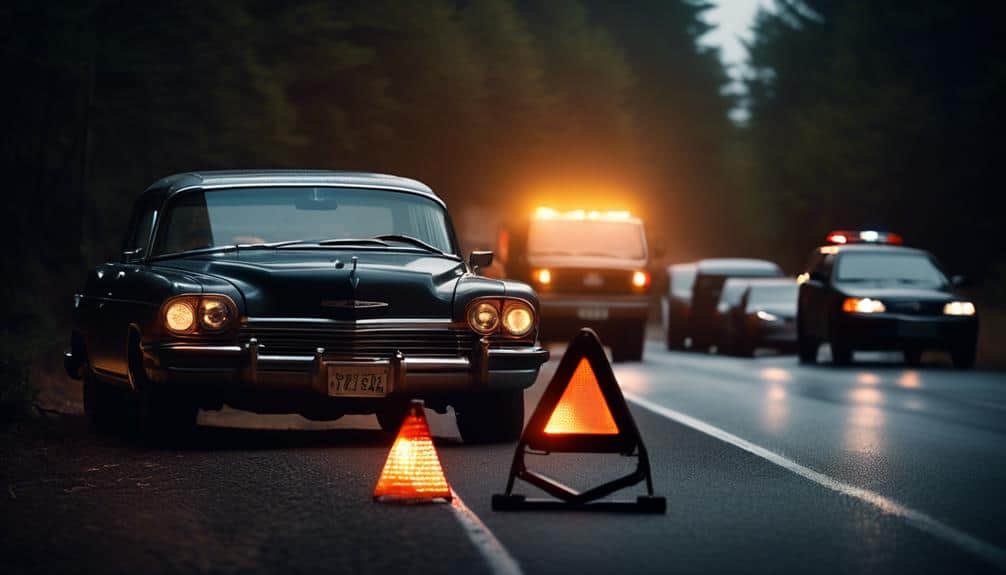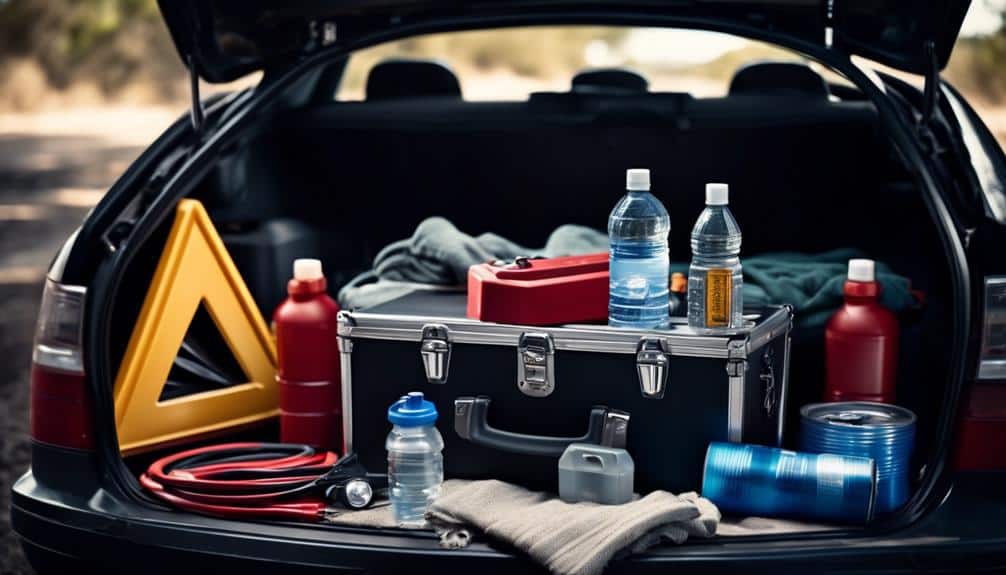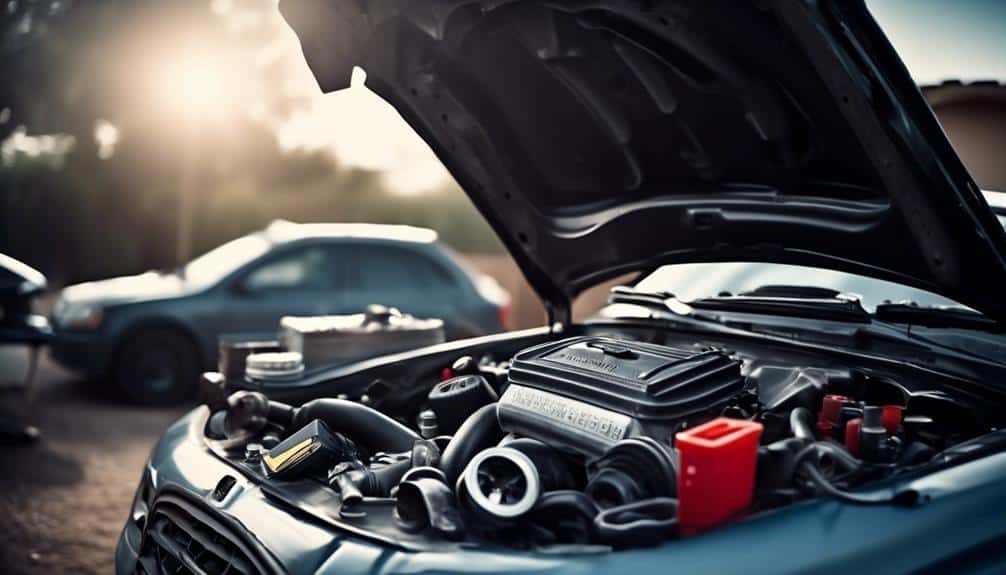
Knowing how to get roadside assistance is crucial if your car breaks down. Car malfunctions can cause stress and danger. Stay calm and informed to handle these situations well.
This guide will help you by providing critical steps for emergencies. You’ll learn about creating a preparedness kit, safely moving your vehicle, and communicating with help efficiently.
Taking the right actions can turn a crisis into a manageable situation. Are you ready to handle a car breakdown? You will be after reading the helpful information below.
Key Takeaways
- Include essential items in your preparedness kit, such as a cell phone charger, first aid kit, jumper cables, spare tire, and flares to stay safe while on the side of the road during a car breakdown.
- Safely maneuver your stranded vehicle by turning on hazard lights, moving to the shoulder of the road, and using reflective triangles or flares to alert other drivers.
- Assess the breakdown scenario by determining the severity of the issue, prioritizing safety, and staying away from traffic or smoking vehicles.
- When contacting roadside assistance, provide accurate information about your situation, stress the need for quick help, and follow any safety advice or instructions the service provider gives.

Essential Preparedness Kit
Keep an Essential Preparedness Kit in your vehicle to manage emergencies on the road. Your kit should include a range of items, be well-organized, and be easily accessible.
A cell phone charger is essential. It keeps you connected to emergency services and roadside assistance. Make sure it fits your vehicle’s outlets and store it where you can easily find it.
Your kit should have a first aid kit with various bandages, antiseptics, and essential emergency medications. This kit will help you treat injuries until professional help is available.
Jumper cables or one of the new battery jumpers are essential for dead battery problems. They can help you avoid long waits for assistance if you know how to use them yourself.
You should also have a spare tire and a tire gauge. These items allow you to fix a flat tire yourself or make it quicker for the roadside assistance responder to get you back on the road quickly. Regularly check your tire’s inflation and ensure you have the right tools for installation.
Regular or battery-operated flares are essential for low visibility situations or to alert oncoming traffic. Set them up behind your vehicle to prevent accidents. They act as a clear signal for help and to warn other drivers.
Safely Maneuvering Stranded Vehicles
When your vehicle becomes stranded, it is essential to handle the situation carefully to ensure safety. Here are the steps to follow:
- Turn on your vehicle’s hazard lights immediately when a problem arises. This signals to other drivers that your vehicle has an issue, and they should be cautious.
- Move your vehicle to the right shoulder of the road if possible. This action reduces the risk of collisions and keeps you safe from oncoming traffic.
- Place reflective triangles or flares behind your parked vehicle. Doing this alerts other drivers to your presence, especially in poor visibility.
- Decide whether to stay in or exit your car based on safety. Stay in your vehicle with the doors locked if you are on a busy road. If it is safe to leave the vehicle, do so from the side away from traffic. Never stand behind or directly in front of your vehicle.

Assessing Breakdown Scenarios
Assess the situation carefully when your vehicle breaks down. First, determine the severity and any immediate safety risks. Minor issues might be manageable, but significant problems often require roadside assistance.
Next, check your vehicle for damage. Give accurate details to your roadside assistance provider. Prioritize your safety, especially in remote or dangerous locations. Stay out of traffic and away from a smoking or burning vehicle.
Try to understand the situation by observing your vehicle safely from all angles. Remain positive and remember that help is available for such unexpected events.
Contacting Roadside Assistance
Ensure your vehicle is secure off the road before you seek help from roadside assistance or a towing service to address the breakdown. Call the number on your insurance card first if your car insurance covers roadside assistance. If not, opt for a local tow service or a national roadside provider. When calling to expedite assistance, provide precise details about your location and car troubles.
Steps for an efficient response include:
- Have insurance information ready: Keep your car insurance details available for claims or to inform the roadside helpers.
- Clearly state your situation: Inform them about the make and model of your car, your exact position, and the precise issue you face.
- Stress the need for quick help: Highlight the urgency if your location is dangerous or has a potential safety risk.
- Adhere to guidance: Roadside providers might offer safety advice or instructions for waiting. Make sure to follow these recommendations.
Remember to maintain your composure and communicate clearly with the service provider for a swift and risk-free resolution to the breakdown.

Avoiding Future Breakdowns
Addressing a vehicle breakdown is necessary, but so is preventing future incidents. Ensuring your car’s smooth and reliable operation involves proactive vehicle maintenance. Regular vehicle checks and adhering to the manufacturer’s service recommendations are essential, including changing oil on time, maintaining critical fluids, and inspecting tires and brakes regularly.
A reliable roadside assistance plan offers peace of mind and quick help when necessary. Also, keep an emergency kit in your car for unexpected situations. Heeding warning signs and doing routine checks can prevent many vehicle problems.
The following table highlights the importance of maintenance tasks for emotional well-being and the risks of neglect:
The table conveys in simple language the positive outcomes of diligent car care and the negative results of neglect. It encourages drivers to take proactive steps for a more dependable and safe driving experience.
Conclusion
Effective handling of vehicular breakdowns requires:
- Adequate preparation
- Strategic maneuvering to ensure safety
- Thorough assessment of the situation
- Prompt communication with roadside assistance professionals
Following these guidelines not only mitigates the immediate risks associated with vehicle malfunctions but also contributes to the prevention of future incidents.
Motorists with this knowledge can navigate breakdowns more confidently and minimize travel disruption.
Mid-Columbia Insurance – Your Trusted Insurance Agent
Call (509)783-5600 and speak to one of our independent insurance agent professionals today, or click “Get a Quote” to request an insurance quote.
Get the insurance you want at a price you can afford!